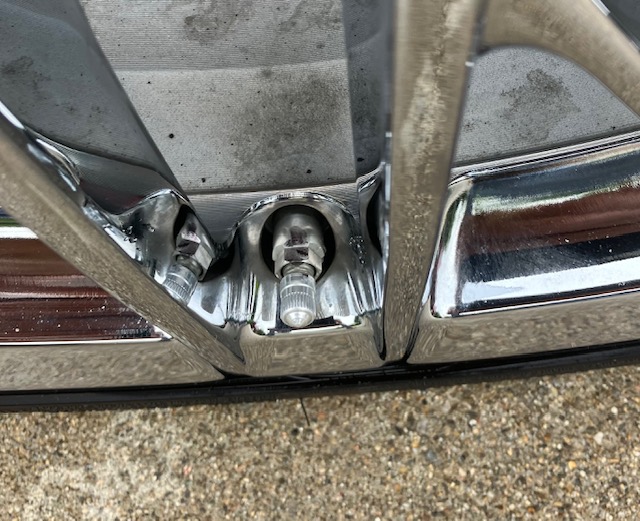The Michelin Pilot Sport tires on my ’13 Corvette were the originals. They say tires should be replaced after ten years, regardless of miles, ‘as a precaution’. In one way this was correct. Those tires had hardened and easily broke loose in third gear — and at an ‘appreciable speed’ that really got my attention. They still weren’t worn down to the wear bars, except at the inner edge of the fronts.
I didn’t want anything fancier than what I had, so I thought getting new Pilot Sports would be no big deal, except for the money!
And I wanted them filled with dry nitrogen. I used to get nitrogen inflation fills as standard procedure at Costco, even for a sedan. So I was not expecting a hassle. The first rep I talked to at Belle Tire said he’d just moved here from Tennessee. The Belle Tire store there had nitrogen and customers “loved it”. After that rep could not find the Michelin tires I wanted, he consulted a second, bigger and ‘more senior’ rep. I also asked him if they could fill with nitrogen instead of plain ol’ wet and oily compressed air. ‘Bigger and more senior rep’ all but ridiculed me. According to him and his expert engineer walk-up customer, no one uses nitrogen anymore. The benefits are tiny. He had been to Spring Mountain in Pahrump for tire and driver training and they use plain ol’ compressed air there. I pointed out that Pahrump is in the desert, with very low humidity, so plain ol’ compressed air there had very little compressed water vapor – very different from a humid summer day here in Indiana. I don’t think he had any idea what I meant.
I really doubt he knew, and I don’t think he was interested to know, that water vapor condenses on a cool day and re-vaporizes on a hot day. And when it does vaporize, liquid water expands 1600 times! I have seen plain ol’ compressed air/oil/water filled tires go from 29 psi on a cool morning to over 38 psi after a challenging drive on a hot day, enough to trigger an excessive tire pressure warning. I have also seen tires removed with condensed liquid water inside. Wonder how long your expensive Tire Pressure Monitoring sensor – which includes a battery and a radio transceiver – will last with a little water sloshing around inside your tire?
GM used to advise nitrogen instead of compressed air to extend the life of tire pressure sensors inside the wheel, but it looks like they no longer advise this in owners’ manuals. Are the sensors more robust now? Or did GM realize that few tire shops offer nitrogen.
Yes, air is about 78% nitrogen, so why would I want pure nitrogen? What’s the gain?
• Have you ever let the air out of a tire valve stem on a cool day and your hand got wet with water? Have you ever removed an old tire and found it wet inside? I have. When you compress air, much of the moisture in the air condenses to liquid water. And piston-type compressors also put oil into the compressed air. A good industrial compressor system should have a chiller to remove the water and coalescing filters to remove oil. With these extras in place, compressed air can be fairly dry and very clean — but these add-ons don’t work forever and are too often unmaintained and rendered inoperative. Industrial compressed nitrogen is clean and essentially completely dry.
• Pressure loss is slower with nitrogen. Nitrogen molecules, though lighter than oxygen, are slightly bigger than oxygen molecules. Tire permeability varies, but a 2007 Consumer Reports study found on average, with compressed air, pressure loss is about 3.5 psi per year, but with nitrogen, pressure loss is about 2 psi per year. https://www.mojotiretools.com/N2_FAQ_Q04.htm I’ve heard that some of the newest tires get an inner coating of sealant that slows this gradual leakage and this would reduce the benefit of using pure nitrogen.
• A more widely claimed benefit of using pure nitrogen is less pressure variation as the temperature changes. This is mainly due to absence of moisture in pure nitrogen. A drop of liquid water expands about 1600 times when it vaporizes. https://www.mojotiretools.com/N2_FAQ_Q01.htm
Realistically, these benefits, even adding them up, are small. But you could get to work just fine in KIA instead of a Corvette and save a helluva lot of money. Or even for fun driving, a Mustang would be almost as much fun and also a lot cheaper. But we selected Corvettes because that’s what we wanted – those special benefits that come from owning a Corvette. So, Mr. Belle Tire professional, I might listen to your advice, but then please shut up and just let me pay extra for what I want.


